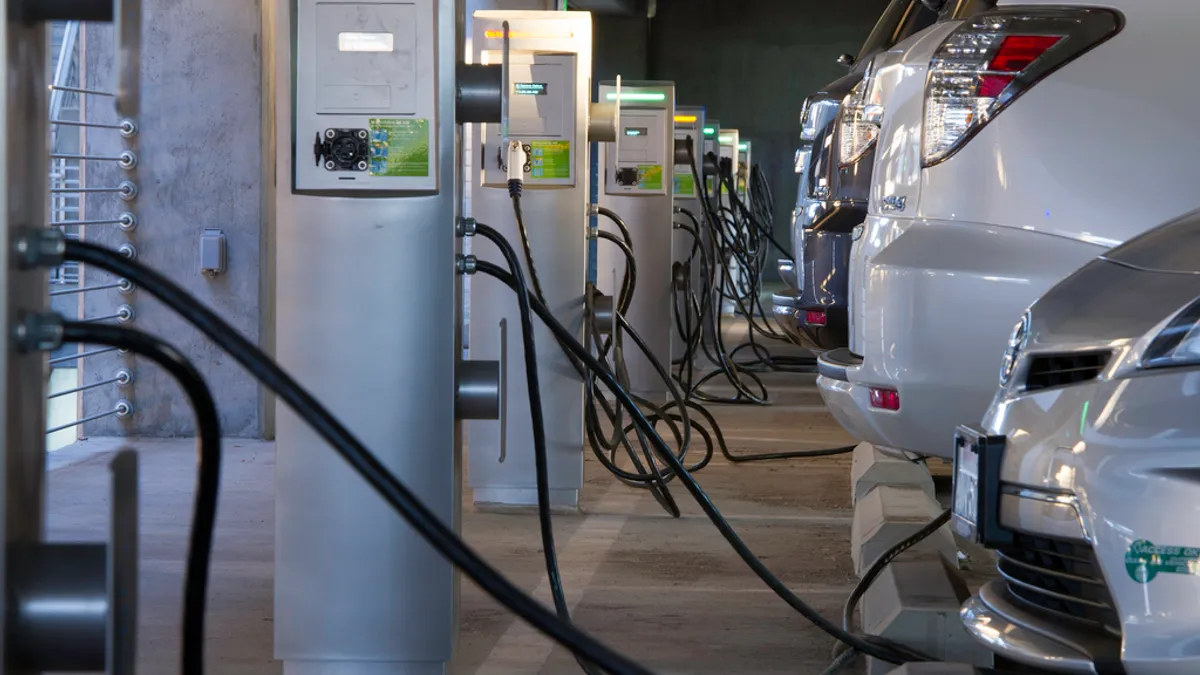Utilities have struggled with flat demand for years, but analysis by the National Renewable Energy Laboratory predicts steady growth across the next three decades — largely driven by the adoption of electric vehicles.
The study considers three scenarios, a reference case and medium- and high-adoption electrification predictions. All indicate demand growth, but in the medium and high scenarios for 2050, U.S. electricity consumption increases by 20% and 38%, respectively, compared to business as usual.
Utilities could go from stagnant demand to compound annual growth rates of 1.6%, which would amount to sustained absolute growth of 80 terawatt-hours per year.
"This unprecedented absolute growth in annual electricity consumption can significantly alter supply-side infrastructure development requirements," the report says.
Study results should hearten utilities, particularly as the electric vehicle industry has gotten off to a relatively slow start in the United States. But EVs are widely expected to catch on, and there could be 7 million of them on the roads by 2025 — up from 567,000 at the end of 2016, according to estimates from the Edison Electric Institute and the Institute for Electric Innovation.
NREL's Trieu Mai, principal investigator for the study, cautions that more research is needed to fully assess the drivers and impacts of electrification, "as well as the role and value of demand-side flexibility."
"Although we extensively and qualitatively discuss the potential drivers and barriers behind electric technology adoption in the report, much more work is needed to quantitatively understand these factors," Mai said in a statement.
However, utilities have largely bought into the dream.
"Electric vehicles are the biggest opportunity we see right now," Energy Impact Partners CEO Hans Kobler told Utility Dive. And the impact could go beyond just higher kilowattt-hour sales.
"When the transportation sector is fully electrified, it will result in around $6 trillion in investment," Kobler said. "Half of that is on the infrastructure side of the utility." And the industry can also benefit through ratebasing charging stations and managing the new demand.
One benefit that NREL's report points to is the possibility of "expanded value streams enabled by electric and/or grid-connected technologies."
"Many electric utilities are carefully watching the trend toward electrification, as it has the potential to increase sales and revenues that have stagnated or fallen over the past decade," the report said. "Beyond power system planning, other motivations to study electrification include its potential to impact energy security, emissions, and innovation in electrical end-use technologies and overall efficient system integration. The impacts of electrification could be far-reaching and have benefits and costs to various stakeholders."
Among the report's other findings, an NREL analysis notes that electrification could "dramatically shift load shapes," with electric heat pumps for winter space and water heating needs playing a significant role.
Shifts in peak demand "could have significant impacts on electric utility planning, grid operations, reliability assessments, and electricity markets," NREL concluded. States in the Northeast or Midwest will see the greatest changes in peak demand.
The impacts of load growth on peak demand are a vital issue for utilities. While demand management can help flatten some of the demand spikes, utilities will need to upgrade their distribution systems. Earlier this year, the California Energy Commission released an analysis of what infrastructure was necessary to reach the state's EV goals, and concluded EV chargers could add 1 GW of peak demand to the grid.
While electrification is broader than the transportation sector, NREL said electric vehicles will undergo the "greatest technology transition" while the buildings and industrial sectors "generally see less potential for transformational change nationwide."
In 2016, electricity's share of final energy consumption in the United States was 19%. Driven largely by the transportation sector, NREL believes electricity's share of total final energy consumption will grow to 32% in the medium and 41% in the high scenario by 2050.















